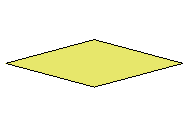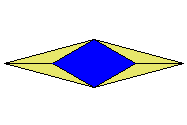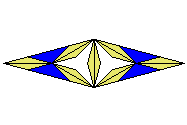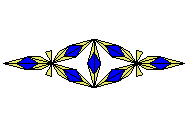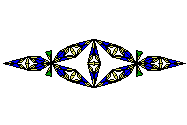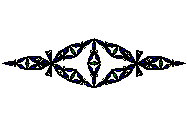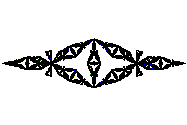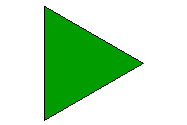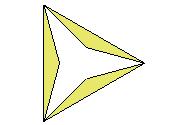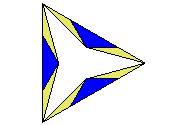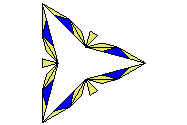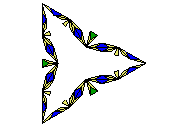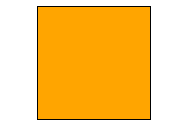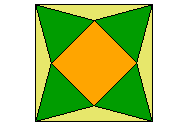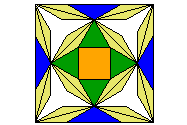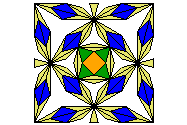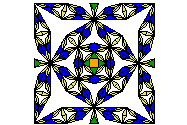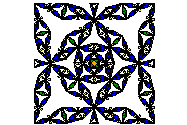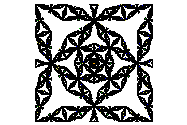Fractals
Although the previous designs were substitution tilings, they were not fractals. The main reason is that as the design continues to iterate, there is infinite detail that is lost to the eye. It becomes one solid blur.
However, fractals can be created using this technique that keep their original detail and continue to get finer detail as the design continues to iterate. This section describes how fractals can be created.
One way to create a fractal is to remove a piece from the transformation set, and continue iterating to grow pieces by eliminating the same shape. The following example shows what happens when the Y-shaped star is eliminated from the transform.
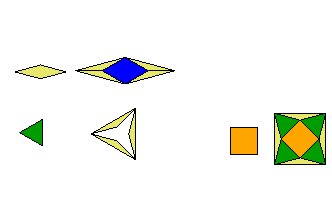
The triangle T0 is grown to T1 with a Y-shaped hole. The diamond D0 is grown to D1 as before. Note that since there is no Y-shaped star, these are the only two pieces needed in the system.
The following diagram shows how these pieces continue to grow.
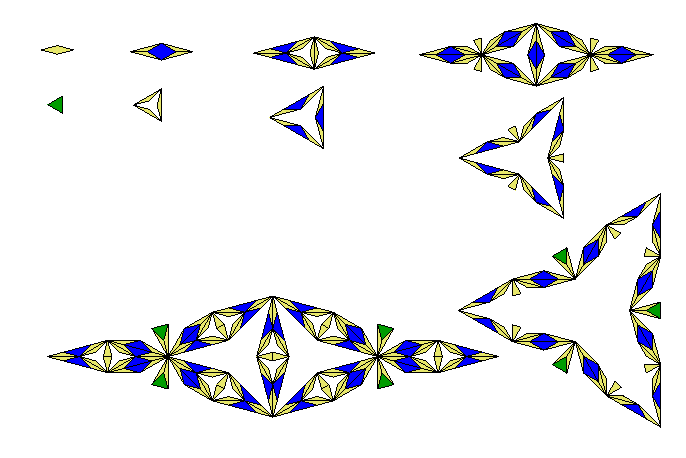
As the Y-shaped hole grows with T2, T3, and T4, more detail emerges, showing other holes. Also note that the diamonds D2, D3, and D4 also have holes. (This is because diamond D2 is made using triangle T1, which has a hole.)
There are two ways to think about what is happening in the progression of one design to another. One way is that the designs are growing into bigger and bigger designs all using the same sized pieces.
But another way to think about what is happening is that you are building the same size design with scaled-down pieces. Since the pieces are smaller, the design shows more detail. This is demonstrated better with the following pictures.
Each picture below was created by repeatedly substituting a set of tiles for each tile piece. Then each diagram was scaled so that all pictures were relatively the same size. This has the effect of showing how smaller pieces are put together to create the same larger piece.
The first set of pictures shows the diamonds D0 to D6. Click on any picture to see a larger picture.
|
|
|
It is interesting to see how the fractal emerges after about the fifth iteration of the design. It is also interesting to see how the fractal design is covered by the larger tiles. For example, the tiles in the diamond D2 cover the fractal seen in D5 or D6.
The following pictures show triangles T0 to T6.
|
|
|
The following pictures show squares S0 to S6.
|
|
|
Copyright 1998-2004 by Jim Millar
